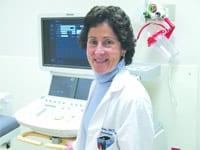Understand the Symptoms and Treatment of Lupus
Lupus has been called America’s most common, least known disease. The disease has a variety of symptoms, many not specific to lupus, so it can look like many other conditions. It can also present differently in different patients; one patient may have a mild case, another may have a severe case, and there’s a large spectrum in between.
Systemic lupus erythematosus is a chronic, inflammatory disease of the immune system that can affect the joints, kidneys, skin, lungs, nervous system, or any organ system. At least 1.5 million Americans have the condition, and more than 16,000 new cases are reported each year.
The immune system is the body’s defense mechanism. Functioning normally, it produces protective antibodies that clean viruses, germs, and cellular debris from the blood. But with lupus, the immune system gets irritated, and the white blood cells called lymphocytes deliver bad (pathogenic) antibodies, which leads the immune system to react against itself and attack the body. The T-lymphocytes lose proper control of the B-lymphocytes. Furthermore, the process of ’apoptosis’ — our natural ability to dispose of old cellular debris — becomes dysfunctional. Lupus is a complex, multi-factorial condition, however, and other elements may trigger the disease. Environmental factors, ultraviolet radiation, hormonal conditions, genetics, and trauma may also play roles.
The American College of Rheumatology has developed 11 criteria for the condition. Among these are fatigue, anemia, low white-cell count in blood, seizures, rashes, hair loss, sensitivity to light, oral blisters, arthritis, and inflammation of the lining around the lung or heart. The presence of four of the 11 would lead a physician to suspect lupus. The ANA, or antinuclear antibody blood test, helps characterize the condition. This test measures our immune ’tolerance.’ Different patterns of the test help define different manifestations of lupus.
Lupus is predominantly a disease of women; 90{06cf2b9696b159f874511d23dbc893eb1ac83014175ed30550cfff22781411e5} of those affected are females. Several theories exist as to why women are more susceptible. Among them is the presence of estrogen. However, men and adolescents can also be affected.
Treatment involves multiple approaches. A healthy lifestyle is key, because the more stress your immune system undergoes, the more aggressive the lupus might be. It is important to eat properly, get enough sleep, keep stress levels under control, and get regular, gentle exercise. There is a wealth of immunologic research suggesting that cells ’talk’ to each other by inflammatory molecules called cytokines in our nervous system, immune system, musculoskeletal system, metabolic-hormonal system, and cardiopulmonary system. Indeed, if one group of cells are inflamed or stressed, this then affects the other cells in other systems and organs.
The drugs used to treat lupus include anti-inflammatories, or immunomodulatory medications such as anti-malarials, methotrexate, imuran, and steroids. A new biologic, Benlysta, has been developed just within the last year and is the first new drug developed for lupus in more than 50 years. There has been a renaissance of immunologic research on lupus, which hopefully will offer new paradigms for treatment.
Patients should be alert to conditions or symptoms such as unexplained hair loss, rashes, morning stiffness, or blisters in the mouth. Talk with your primary-care physician, as a visit with a rheumatologist, a specialist in the treatment of autoimmune conditions, may be required. It’s important to diagnose lupus early. The good news is that most patients with lupus can lead normal lives with early diagnosis, proper care, and regular medical attention.
For more information on lupus, visit the American College of Rheumatology at www.rheumatology.org. For a video discussion, visit www.physicianfocus.org/lupus. –
Martin J. Kafina, M.D., F.A.C.R., is a rheumatologist at Emerson Hospital in Concord, Mass. and a clinical instructor in medicine at Harvard Medical School. This article is a service of the Mass. Medical Society.



Comments are closed.